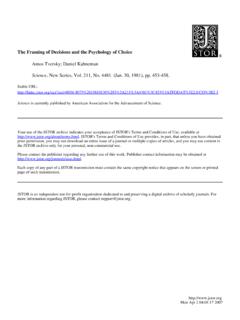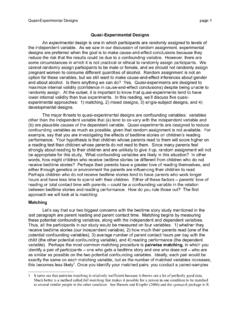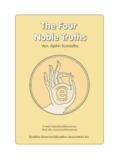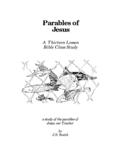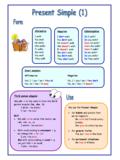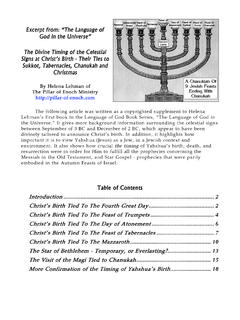Transcription of DISSECTION OF THE SHEEP'S BRAIN - Hanover College
1 Sheep BRAIN DISSECTION Guide DISSECTION OF THE SHEEP'S BRAIN . Introduction The purpose of the sheep BRAIN DISSECTION is to familiarize you with the three- dimensional structure of the BRAIN and teach you one of the great methods of studying the BRAIN : looking at its structure. One of the great truths of studying biology is the saying that "anatomy precedes physiology". You will get sick of me saying that phrase this phrase if I teach well. What this phrase means is that how something is put together tells us much about how it works. My challenge to you with this exercise and throughout the term will be to examine a structure and think what this means about the operation of the BRAIN . Your ideas can be as valid as anyone else's who has tackled this delightfully impossible task if you think carefully While the course will emphasize the human BRAIN , observation and evolution indicate that there are many similarities between the sheep BRAIN and the human BRAIN .
2 Even the differences are instructive and help us to learn about the BRAIN . Being able to locate important structures in the sheep BRAIN will be of great benefit to understanding how structures are related to each other in the human BRAIN . If the same structure exists in both brains (and most structures are the same), they are in the same relative location. During the course of the DISSECTION , I will point out some of the differences between brains so that you will be better able to appreciate the development of the human BRAIN . It is extremely important for the rest of the class that you learn the structure of the SHEEP'S BRAIN well. In the rest of the course, we will regularly refer to structures that we examine in this DISSECTION . Please follow the following steps in order. All terms that you need to know are in bold italics the first time they are listed. Materials and Preparation.
3 1. Before beginning inspection and DISSECTION of the BRAIN you should have these materials on hand: DISSECTION pan DISSECTION kit: BRAIN scalpel probe scissors 2. The brains are stored in a preservative solution. To minimize the drying of your hands, rinse the BRAIN under a slow stream of running water before proceeding with the DISSECTION . When not in use, the brains should be stored in preservative solution in the container given to you and sealed tightly. 3. These steps will need to be repeated prior to each laboratory session. Sheep BRAIN DISSECTION Guide Procedure Directions. Before beginning the DISSECTION of the sheep BRAIN you will need to know the terms used to specify the location and relative location of various BRAIN structures. Below are illustrations of direction. All these terms are both absolute and relative. Let me explain that. Let us take lateral. It both means at the side of the BRAIN , and closer to the side.
4 So some structure that is quite in the middle can be lateral to another structure that is even closer to the middle of the BRAIN . To summarize, anterior or rostral mean in the front or towards the front. Posterior or caudal is at or towards the back. Lateral means on the side or towards the side. Medial is at or towards the middle. Dorsal means on top, in the BRAIN and head only, and ventral means on the bottom, in the BRAIN and head only. The positions and directions are illustrated in the next two illustrations. Lateral Anterior Medial Posterior or or Rostral Caudal Dorsal Anterior Posterior or or Rostral Caudal Ventral Sheep BRAIN DISSECTION Guide Planes of Orientation In addition to the direction, the BRAIN as a three dimensional object can be divided into three planes. There is the frontal or coronal planes which divides front from back. It can divide the BRAIN and any location as long as it divides the BRAIN from front to back.
5 Next are the saggital planes which divides the left from the right of the BRAIN . In the figure below, the most important saggital plane is illustrated the mid-saggital plane. However, as with the frontal planes, any plane that is parallel to the mid-saggital plane, is also a saggital plane. The last planes are the horizontal planes that divide the BRAIN in to top and bottom portions. These planes are illustrated with samples in the illustrations below. A Frontal or Coronal Plane A Saggital Plane A Frontal or Coronal Plane A Horizontal Plane Sheep BRAIN DISSECTION Guide Now onto the DISSECTION Proper. The procedure is divided into three main sections: Examination of the Exterior of the BRAIN , Examination of the Mid-Sagittal Plane of the BRAIN , Examination of two Frontal Cuts. Examination of the Exterior of the BRAIN . The first portion of the DISSECTION will be a detailed examination of the BRAIN surface.
6 No actual cutting of the BRAIN is required for this portion of the DISSECTION . As you proceed to identify the listed parts of the BRAIN , note their structure and how they are related to other parts of the BRAIN . What conclusions can you make about the BRAIN from this examination? 1. First examine the exterior of the entire BRAIN . You may be able to see one or two of the three layers of the meninges, the dura mater, the arachnoid layer, and the pia mater. The meninges are the protective coverings, which enclose the BRAIN and spinal cord. The dura mater, the tough outer layer, will have been mostly removed when the brains were prepared for the DISSECTION ; however, some of the dura mater may remain near the base of the BRAIN . The arachnoid layer, the middle layer, and pia mater, the inner layer, are still likely to cover the BRAIN . The pia mater follows the gyri and sulci and most likely is still on your specimen and may be indistinguishable from the BRAIN .
7 Blood vessels are between the arachnoid layer and the pia mater. These vessels and the arachnoid layer will obscure your view of the sulci making the identifications below difficult and confusing. Before proceeding with the identification of structures on the surface of the BRAIN you will need to remove the arachnoid layer and the blood vessels. Use your tweezers and be very careful because the BRAIN is soft and easily damaged. Dura Mater Sheep BRAIN DISSECTION Guide Gyrus Sulcus 2. Next locate the area referred to as the BRAIN stem. This area is made up of the pons, medulla, and cerebellum. Find also the root where the pituitary gland was attached to your BRAIN . The pituitary gland may have been there when you first cleaned your BRAIN . Pons Medulla Pituitary Gland Cerebellum Sheep BRAIN DISSECTION Guide 3. Examine the ventral surface of the sheep BRAIN . The next several steps will view this surface of the BRAIN .
8 A pair of olfactory bulbs may be seen, one under each lobe of the frontal cortex. Several important parts of the visual system are visible in the ventral view of the BRAIN . Muscles, other nerves and fatty tissue may surround the optic nerve on your specimen. After inspection of these, use a scalpel to cut away this muscle tissue, leaving as much of the optic nerve as possible protruding from the ventral side of the BRAIN . Notice that as the optic nerves from the right and left eyes proceed towards the center of the BRAIN , they meet in the optic chiasm (named for the Greek letter chi, C, which it resembles). In the optic chiasm, there is a partial crossover of fibers carrying visual information. Any time fibers in a tract or nerve cross the midline of the BRAIN it is called a decussation. After the optic chiasm, visual information proceeds along the optic tract toward the visual cortex.
9 You need to know the difference between a nerve and a tract. On this screen also note the longitudninal fissure and the cranial nerve called the oculomotor (III) nerve which helps control eye movements. Olfactory Bulbs Longitudinal Fissure Optic Nerves Optic Chiasm Optic Tract Oculomotor Nerve Sheep BRAIN DISSECTION Guide 4. Find the medulla (oblongata) which is an elongation below the pons. Among the cranial nerves, you should find the very large root of the trigeminal nerve. Pons Medulla Trigeminal Root 5. From the view below, find the IV ventricle and the cerebellum. Cerebellum IV Ventricle Sheep BRAIN DISSECTION Guide 6. From the view below, you can see both the superior colliculus(i) and inferior colliculus(i). The superior and inferior colliculi are part of the midbrain and collectively known as the Tectum. Inferior Colliculus Superior Colliculus IV Ventricle 7. Note the large gyrus called the Uncus.
10 Posterior to the uncus find the Hippocampal gyrus so named because the hippocampus lies dorsal to it. In the middle of the BRAIN you will find the Mammilary Bodies which are part of the limbic system and play a role in memory. Also find the Rhinal Fissure which defines one boundary of the limbic system. Optic Nerve Uncus Mammillary Bodies Hippocampal Gurys Rhinal Fissure Sheep BRAIN DISSECTION Guide 8. Now find the four lobes of the cerebrum: frontal, parietal, temporal, and occipital. The Frontal Lobe is bounded by the Ansate Sulcus and the Pseudosylvian Sulcus. The Parietal Lobe is bounded by the Ansate Sulcus, the Suprasylvian Sulcus, and the Lateral Sulcus. The Temporal Lobe is bounded by the Pseudosylvian Sulcus and the Suprasylvian Sulcus. The Occiptial Lobe is inside the Lateral Sulcus. Frontal Lobe Ansate Sulcus Pseudosilvian Sulcus Suprasylivan Sulcus Temporal Lobe Lateral Sulcus Occipital Lobe Suprasylvian Sulcus Ansate Sulcus Pseudosylvian Sulcus Temporal Lobe Parietal Lobe Frontal Lobe Sheep BRAIN DISSECTION Guide Examination of the Mid-Sagittal Cut Do not proceed to the next step before checking with the lab instructor.




